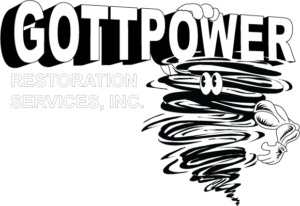
Most people are familiar with mold growth when it is seen as a fuzzy patch on food, or as a stain spreading across damp surfaces. There have been numerous studies that indicate mold can be harmful when ingested. But the air-born particles found in our homes and other buildings are not usually suspected to be a health hazard to the general public.
“Mold spores are everywhere! There are acceptable levels of mold and unacceptable levels in dwellings. It takes excessive water intrusion or condensation to create unacceptable levels of mold.” remarks Darrel Gottschalk, owner of GottPower, a mold remediation company servicing the Chesapeake and Mid-Regions of Maryland.
According to the American Industrial Hygiene Association, if mold is present it is best to have the problem remediated, regardless of what species is present. AIHA recommends testing air quality in instances of litigation, or specific health concerns are an issue, or if the specific source of the contamination is hidden.
Sampling for airborne mold spores can indicate whether the mix of indoor molds is typical of the outdoor mix or rather unusual at the time of testing. Samples are taken of the surrounding outdoor air quality, and of the indoor air. A useful method for interpreting microbiological results is to compare the kinds and levels of organisms detected in different environments. Usual comparisons include indoors versus outdoors, or complaint areas versus non-compliant areas. Indoor mold types should be similar to, and airborne concentrations should be no greater than, those found outdoors and in non-complaint areas.
The CDC stresses that the term toxic mold can be misleading to the general public. But the organization does state that the current guidance of federal and professional organizations is that mold growth should be controlled in an appropriate manner, regardless of the type of mold.
Mold becomes an issue when it is ignored or overlooked. The best way to control mold is to control moisture. If the mold is an issue in your home, it MUST be cleaned up and removed, and the source of the moisture eliminated. Fixing the source of the water problem or leak will prevent further mold growth.
Reducing indoor humidity can greatly reduce potential mold growth by using proper venting in bathrooms and for laundry dryers. Use air conditioners and de-humidifiers, or exhaust fans when showering or while cooking.
Care should be taken, using appropriate cleaning methods for small spots and careful attention to dust control, seeking professional assistance for larger amounts.
Gottschalk insists it is important to have a company that understands both aspects of fixing the moisture/water issues and mold remediation. GottPower Restoration Services takes care of the structure repair, basement and crawlspace waterproofing, and mold remediation.
The GottPower service area encompasses a diverse region in Mid-Maryland, offering mold remediation services in Baltimore County or Prince Georges County, Historic Annapolis, and the Eastern Shore. Call the experts at GottPower, when you have a problem with excess moisture or flooding. We also offer a wide variety of excess moisture preventative services such as basement waterproofing and crawlspace encapsulation.
Looking to Get Started? Call Today!
